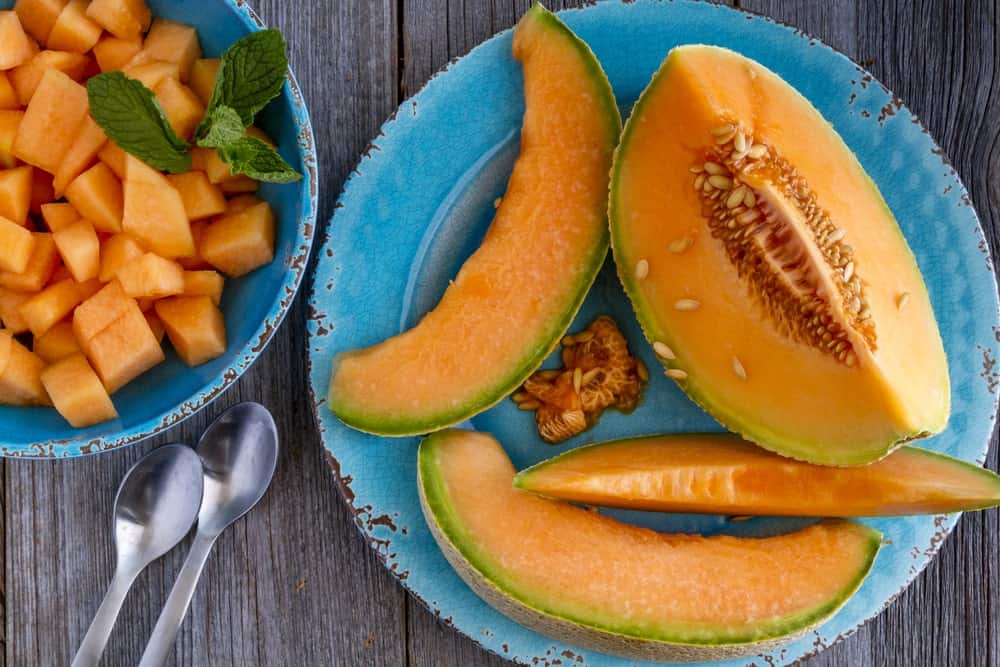
Oh, that sensation when you bite into a piece of that succulent, sweet cantaloupe you just bought at the farmer’s market. They don’t often sell them like that at the grocery stores. They pop with subtle nuances of flavor.
Cantaloupes are one of the choicest fruits out there. They are a great source of vitamins and minerals. They are quite versatile, too. You can eat a melon by itself with some salt. You can add some other fruit to it and make a fruit salad for the family.
Smoothies and sorbets are always a way to go. There are also two ways to use melons that you may not have thought of. Lots of people make cold soups with melon, and now it’s the ‘in’ thing to grill melon slices over a fire. It brings out the natural sugars.
Maybe you don’t know that much about cantaloupes and melons, but you’re definitely curious about what choices there are out there. Well, grab a cup of coffee because we’re getting ready to help you explore cantaloupe and melon options.
What are Melons?
Melons are kin to cucumbers and squashes as members of the Cucurbitaceae family. This includes watermelons (Citrillus lanatus). However, today we are only concerned with the other members of the family, muskmelons (Cucumus melo): all the melons in these three melon families (cantalupensis, reticulatus, and inodorus).
Use Your Senses to Find the Best
Would you like to know how to shop for the right melon? Well, let me tell you. You use the senses that you were given.
- See
- Look for symmetrical melons that look fully grown.
- Look at the stem scar.
- A smooth scar with a hollowed look indicates a melon picked when ripe.
- If part of the stem is still there, it may have been picked early.
- Look for skin that is dull and not shiny.
- The spot where the melon rested needs to be yellow or creamy. You do not want it to be white or green.
- Feel
- Feel for a melon that is heavy for its size. It will be juicier.
- If you have a thinner-skinned-type melon, apply gentle but firm pressure on the non-stem end. If your finger begins to depress, it’s ready to eat.
- Smell
- A ripe melon usually gives off a musky aroma.
- Hear
- A gentle tap on the rind should yield a hollow sound.
Like tomatoes, muskmelon’s flavors are diminished by refrigeration. Keep them out until you cut them.
Nutritional Facts Chart
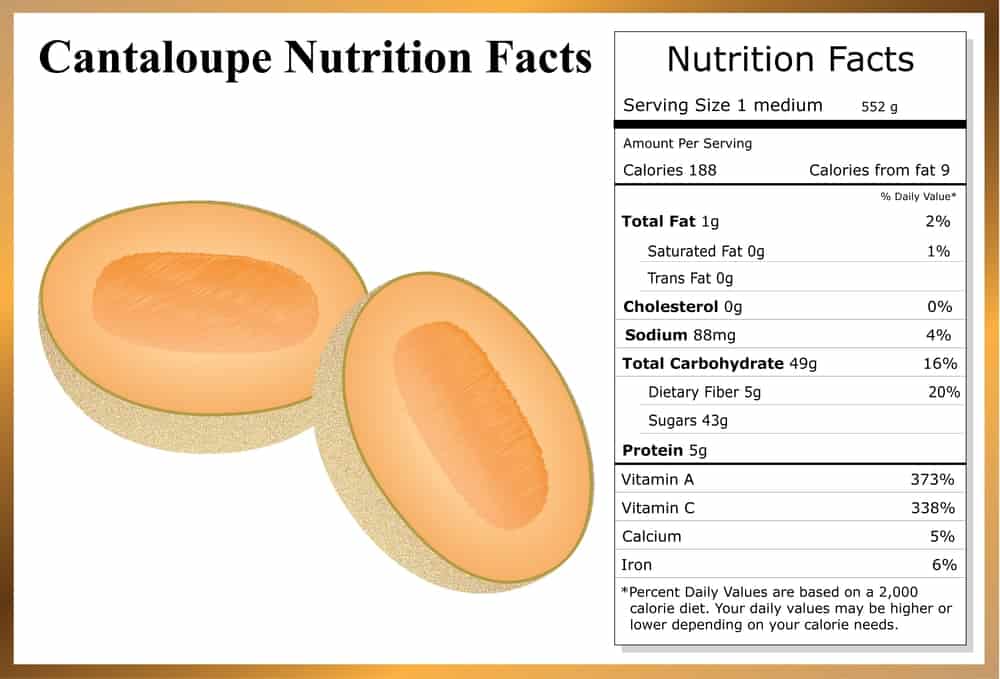
Cantaloupes vs Muskmelons: Same or Different?
The answer here is that cantaloupes and muskmelons are different. Though often used interchangeably, the two terms have different meanings. While a cantaloupe is always a muskmelon, a muskmelon may or may not be a cantaloupe.
A good example may be a honeydew melon. Most grocers in North America carry both cantaloupes and honeydew melon. Both are muskmelons, but both are not cantaloupes.
Other muskmelons, like honeydew melons, casaba melons, and canary melons, share many traits of cantaloupes.
Types of Cantaloupes
Cantaloupes: their sizes, textures, and tastes vary, as do the colors of their fleshes and the textures of their shells. They are classified and divided by origin first.
European Cantaloupe
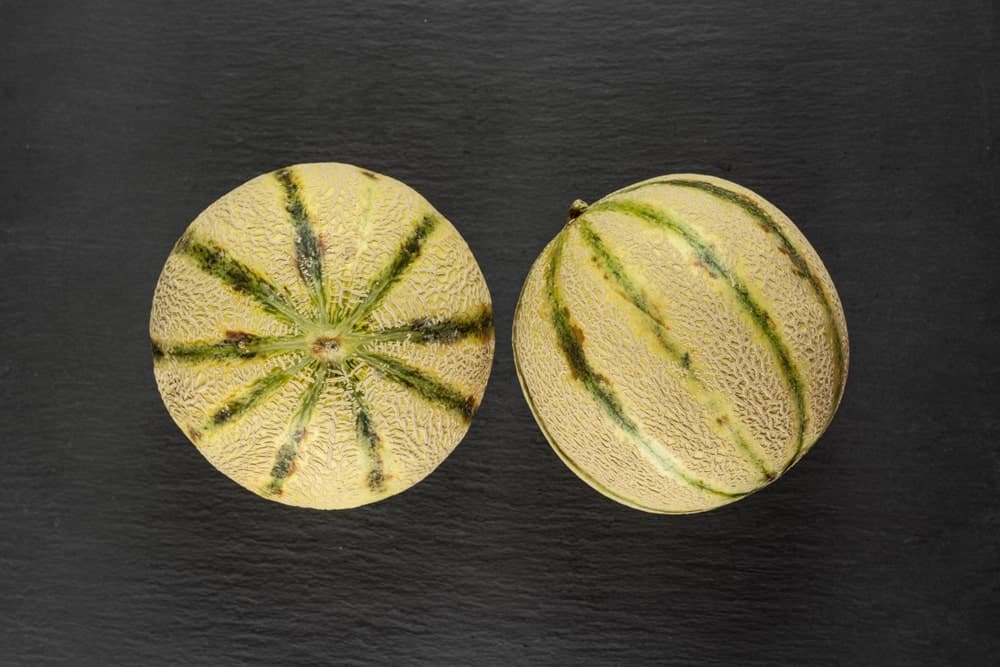
Known as the ‘true cantaloupe,’ European cantaloupes (Cucumis melo cantalupensis) possess tough gray-green rinds. These rinds are usually not netted at all, but if they are, it is ever so slightly. Their outer colors are light with green stripes with no patterns, just stripes. Their flavors are musky and sweet, as are their smells.
The belief is that these cantaloupes came to Italy from Africa or Asia. They were named cantaloupes because after they arrived from their sources, they were harvested in Cantalupo, Italy.
North American Cantaloupe
The North American cantaloupe is different from a ‘true cantaloupe’ because of its rough, netted skin covering a pale yellow shell. While the odors and flavors are similar, the rind is not as hard as that of a true cantaloupe.
As the North American cantaloupe ripens, the raised netting pronounces itself more noticeably, and the rind turns from a greenish to a tannish shade. The flesh becomes juicy, orange, and fragrant.
Asian Cantaloupe
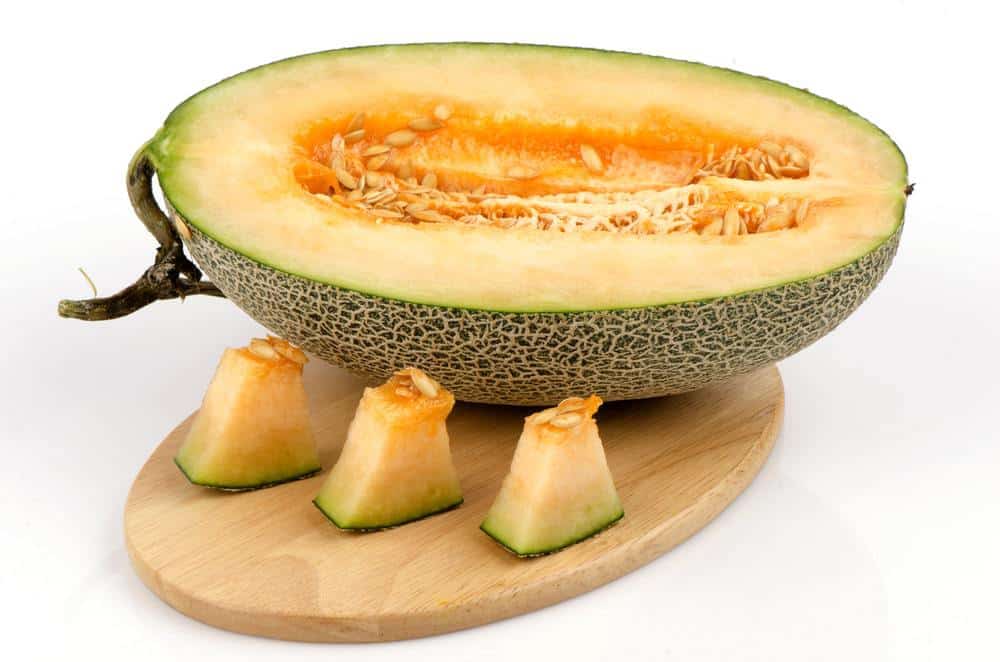
Many believe that true cantaloupes originated in Asia (also Cucumis melo reticulatus) and that they were only then taken to Europe and named after a town in Italy. If this is true, then the Persian melon or Hami melon would somehow be where our cantaloupe came from.
The Asian type is not netted as deeply as the North American cantaloupe. Its flesh is also not vibrant like the Western melons, but pale orange. It has delicate flavors. There is some subtle netting on a greenish or yellowish-pale background. The Asian cantaloupe’s flesh has a crispy tinge, unlike the North American cantaloupe, which is soft and pulpy.
Japanese Cantaloupe
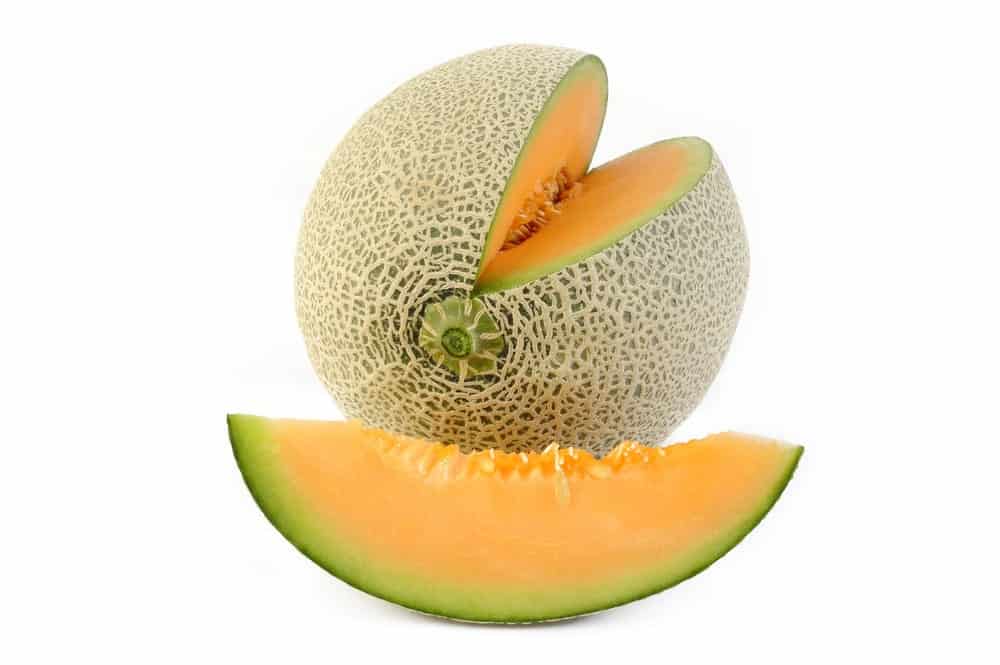
The Japanese cantaloupe (Cucumis melo ‘Yubari King’) is many times called the crown melon and is famous for its size. The Yubari King melon, as it is known locally, is very expensive. It’s a status symbol for those who can afford the luxury. The Japanese gift culture is extensive. Fruits there are considered luxury items, with melons being the most expensive. Yubari melons are a popular choice among affluent gift-givers.
The Yubari King cantaloupe got its name because it is only grown in one place in the world. It is only cultivated in Yubari, Japan. Each Yubari melon is nurtured with the utmost care. The process is highly labor-intensive. Stems are pruned to precisely the same lengths. The seeds are pollinated manually, and the fruits are massaged by hand.
The Yubari King doesn’t bring in the cash just because of the taste, either. These melons are beautiful to look at, perfectly round, and aesthetically packaged. One Yubari King melon often goes for $200.
Galia Cantaloupe
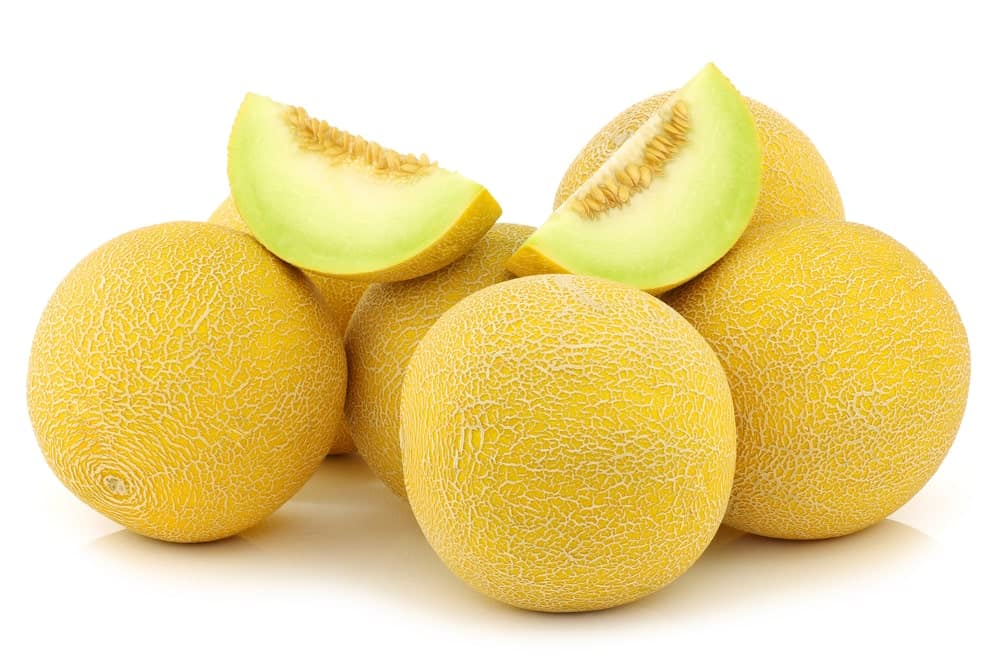
Originating in Israel, the Galia cantaloupe (Cucumis melo var. reticulatus) is a favorite in Southeast Asia. Locally known as Sarda, like the North American cantaloupe, many people say it is only a melon, not a cantaloupe. The Galia cantaloupe has a sweet flesh that is green or pale yellow.
A Galia melon is a hybrid of a cantaloupe and a melon. People say it looks like a cantaloupe until you cut into it and find a honeydew melon. These melons are smaller than their European and North American counterparts. They are quite juicy, and they are full of vitamins, minerals, and bioflavonoids. They boast no fats and low calories, so they are an after-dinner hit in South Asia.
Charentais Cantaloupe
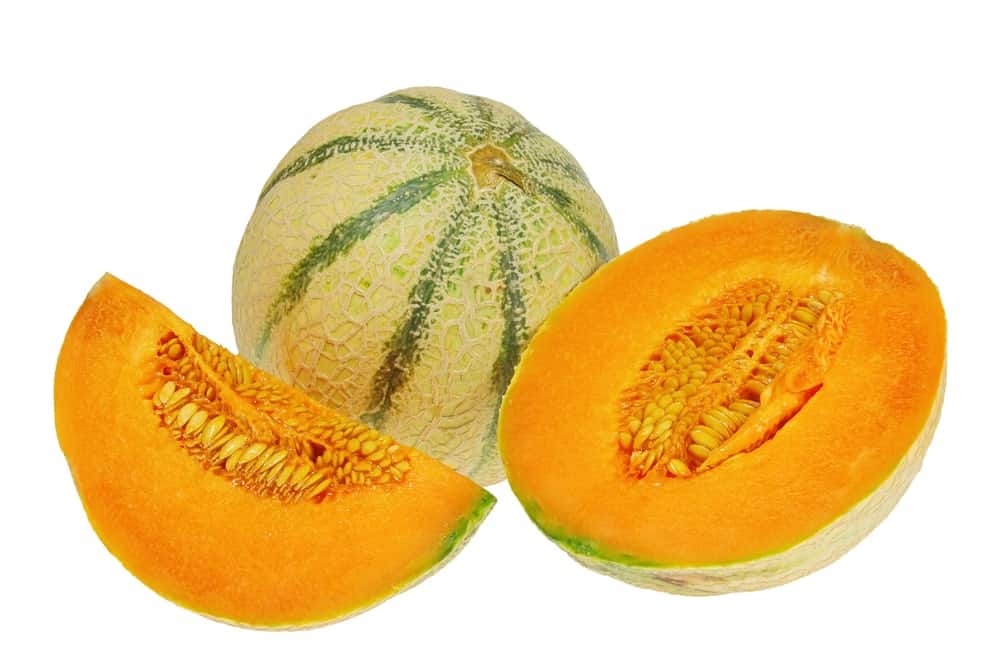
Charentais cantaloupes (Cucumis melo cantalupensis) are often referred to as French cantaloupes. While they originated in the Poitou-Charentes region of Western France though, much of today’s production is done in North Africa. These cantaloupes are available in the summer months and are prized for their health content, being rich in good beta-carotene, folic acid, and dietary fiber.
The Charentais melon is thought of as one of the best variations of cantaloupes ever to be grown. Considered superior to all other melons in arenas of flavor, aroma, and texture, the average Charentais melon weighs only about 2 lbs, which is smaller than most melons and hardly grapefruit-size.
The outside of this melon is smooth, sporting a stony creamy-gray color under faint green ribs. The flesh is dense, a bright orange-salmon color. It is quite flavorful and fragrant, and it has high sugar content.
Relatives and Hybrids
The line between melons and cantaloupes is a thin one, and like the line between love and hate, it’s getting thinner all the time. The term “cantaloupe” is now used to mean any melon but a watermelon. Scientists and botanists cross-breed different melons to try and produce melons with higher quality. These crossbred melons are called hybrids. Hybrids are the result of crossing the most superior melons of two different types of melons so that you hopefully result in a product with the best of both melons.
Today’s hybrids have less space taken up by seeds, so there is more room for that juicy, scrumptious flesh. They are more disease-resistant. They have a longer shelf-life. Best of all, though, they boast better textures and stronger flavors.
Let’s look at some of these amazing hybrids.
Crenshaw Melon
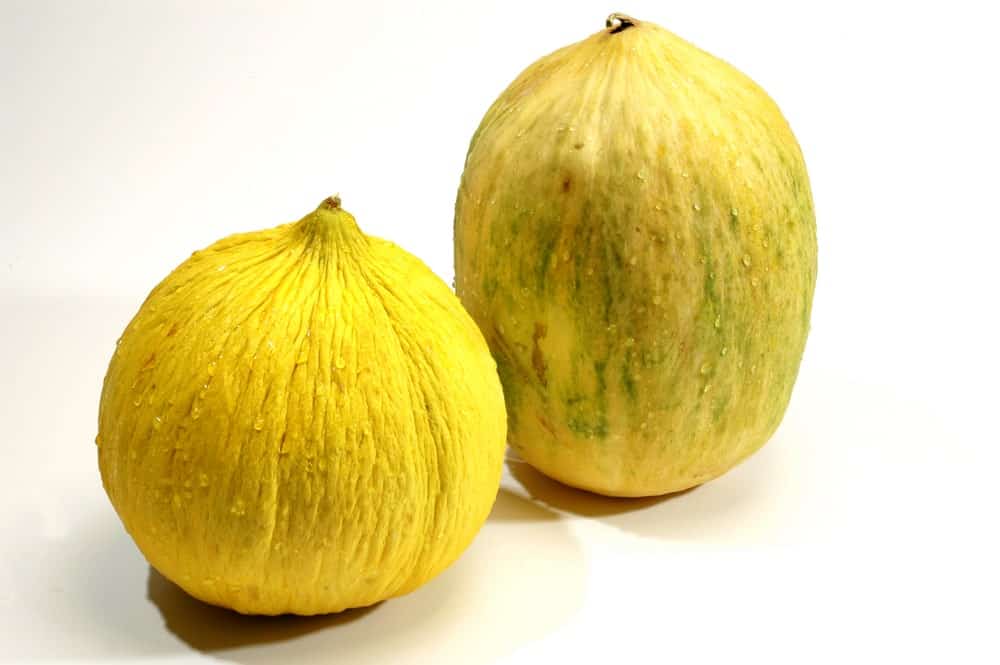
The Crenshaw melon is a hybrid of the Casaba and Persian cantaloupes. They possess superior taste, which is juicy and sweet and better than either the Casaba or the Persian cantaloupes. Crenshaw melons look a lot like Casaba melons. They lack fragrance but have a great shelf-life.
These melons are approximately 8-10 lbs each, which is large for a melon. The color of the rind is a buttercup yellow. It has a waxy feel and textural striations, which run from end to end. Crenshaw melons have peachy flesh, like that of a cantaloupe.
As a matter of fact, Crenshaw melons are known to be one of the sweetest melons there is, and that is why they are called the ‘Cadillac of Melons.’ Full of vitamin A, vitamin B6, and vitamin C, it is a good choice as well as a selfish one.
Honeydew Melon
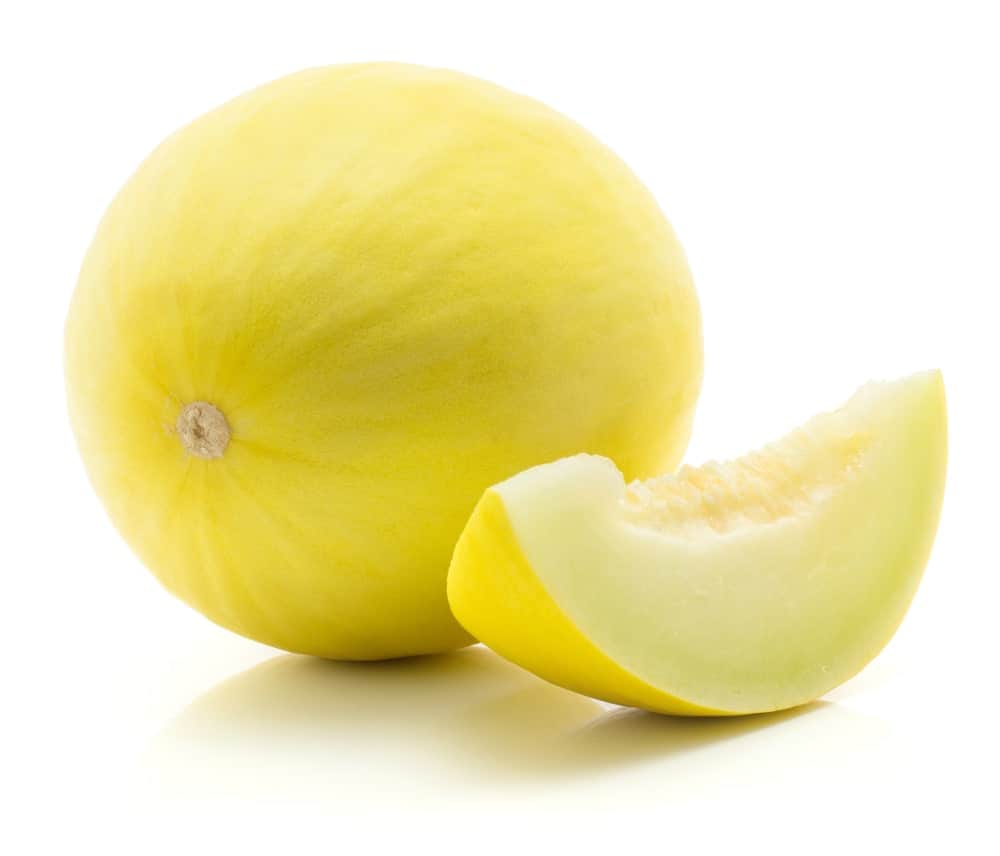
The Honeydew melon is what we call the White Antibes cultivars in Algeria and France. They have been growing there for many years. The semi-arid conditions are a prime setting for cultivating Honeydew melons. Honeydew melons and cantaloupes are the same species, Cucumis melo; however, they are different types of fruit.
Honeydew is a melon with sweet flesh like cantaloupe and a smooth rind without the netting. Honeydews are the most popular melons there are.
Honeydew melons are members of the gourd (Cucurbitaceae) family. The gourd family further divides into fruits, where you will find your melons and cantaloupes, and vegetables, where you will find your squashes, pumpkins, and cucumbers.
These melons sport a cross between a white and yellow waxy shell. It has green striations, which are subtle, while the flesh inside is light green and sweet. Honeydew melons are from the inodorous group of melons.
This simply means it has no smell that is distinguishable. Honeydew melons have essentially the same nutritional value as cantaloupes. They are made up of 90% water, telling us they are great for rehydration. They are also a super source of vitamin C.
FAQs
How to cut a cantaloupe
Start by thoroughly washing the melon to eliminate any outside bacteria from being transferred inside. After washing, dry your fruit using a towel that doesn’t leave lint behind. Then, with precise cuts, slice each end off of the melon creating two separate flat surfaces that will accommodate peeling its rough surface. By having these flat surfaces in place, it is much easier to stabilize on a cutting board before carving the core out with a spoon or slicing it into smaller pieces.
When is cantaloupe season?
Cantaloupe season is generally from June to October. However, the season can vary depending on the location. For example, in southern states and regions along the Mexico border, cantaloupe season can be from May through September or October, while in Alaska and northeastern states, the season won’t begin until July.
What color is cantaloupe?
Cantaloupe has a rind color that includes beige, green, and yellow, and the hues vary depending on the ripeness and variety of the cantaloupe. The flesh is usually orange, while the rind of cantaloupe is darker and netted.
Color-Name.com provides the hex code for the color of cantaloupe as #F08C60, which is a light orange color.
How long does cut cantaloupe last in the fridge?
Cut cantaloupe can last from 3 to 5 days in the fridge when fully ripe.
How to freeze cantaloupe
Cut the cantaloupe open and remove the seeds. Then, cut the flesh into chunks or slices. Spread the cantaloupe pieces on a baking sheet lined with parchment paper and freeze them for at least 30 minutes or until frozen through. Once frozen, transfer the cantaloupe to a freezer-safe bag or container and label it with the freezing date. Frozen cantaloupe will last in the freezer for up to six months and can be defrosted at room temperature or in the fridge.
